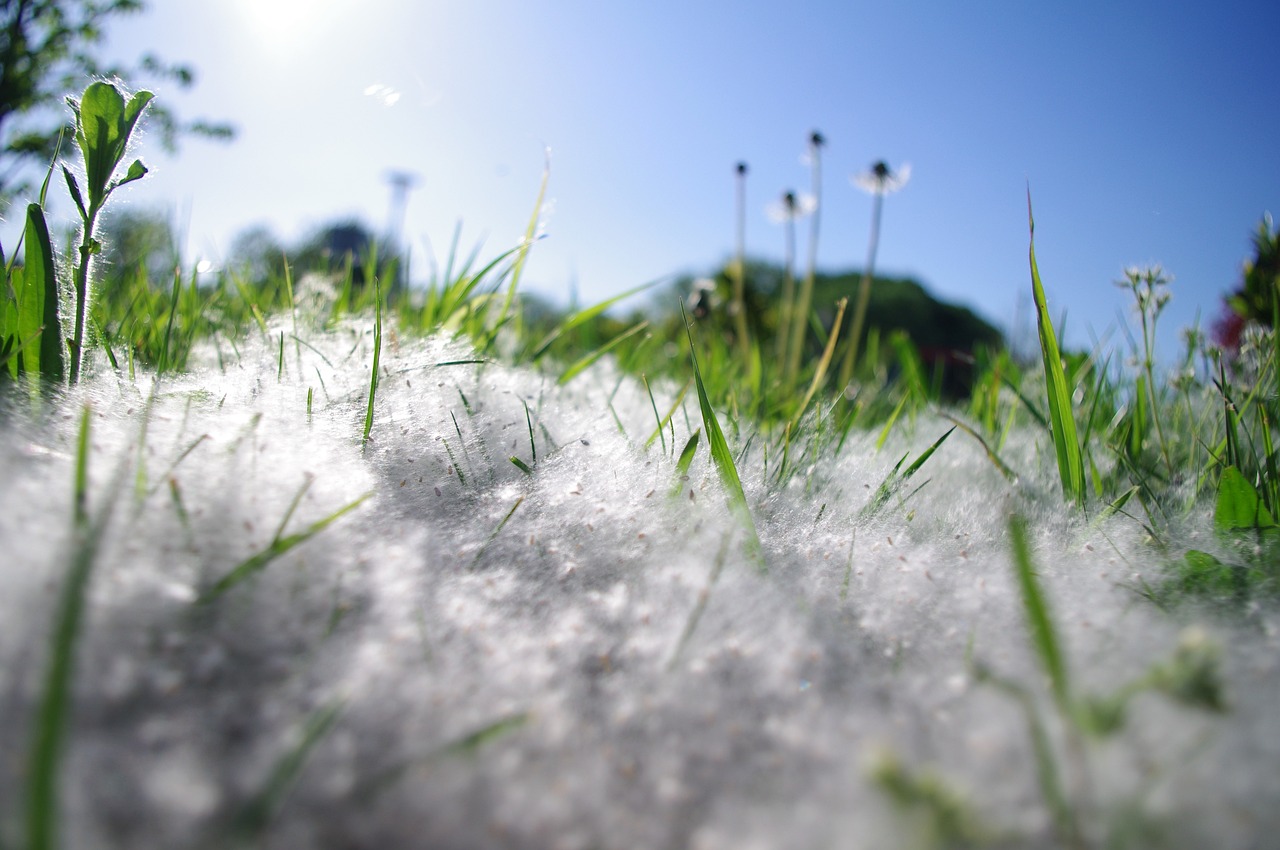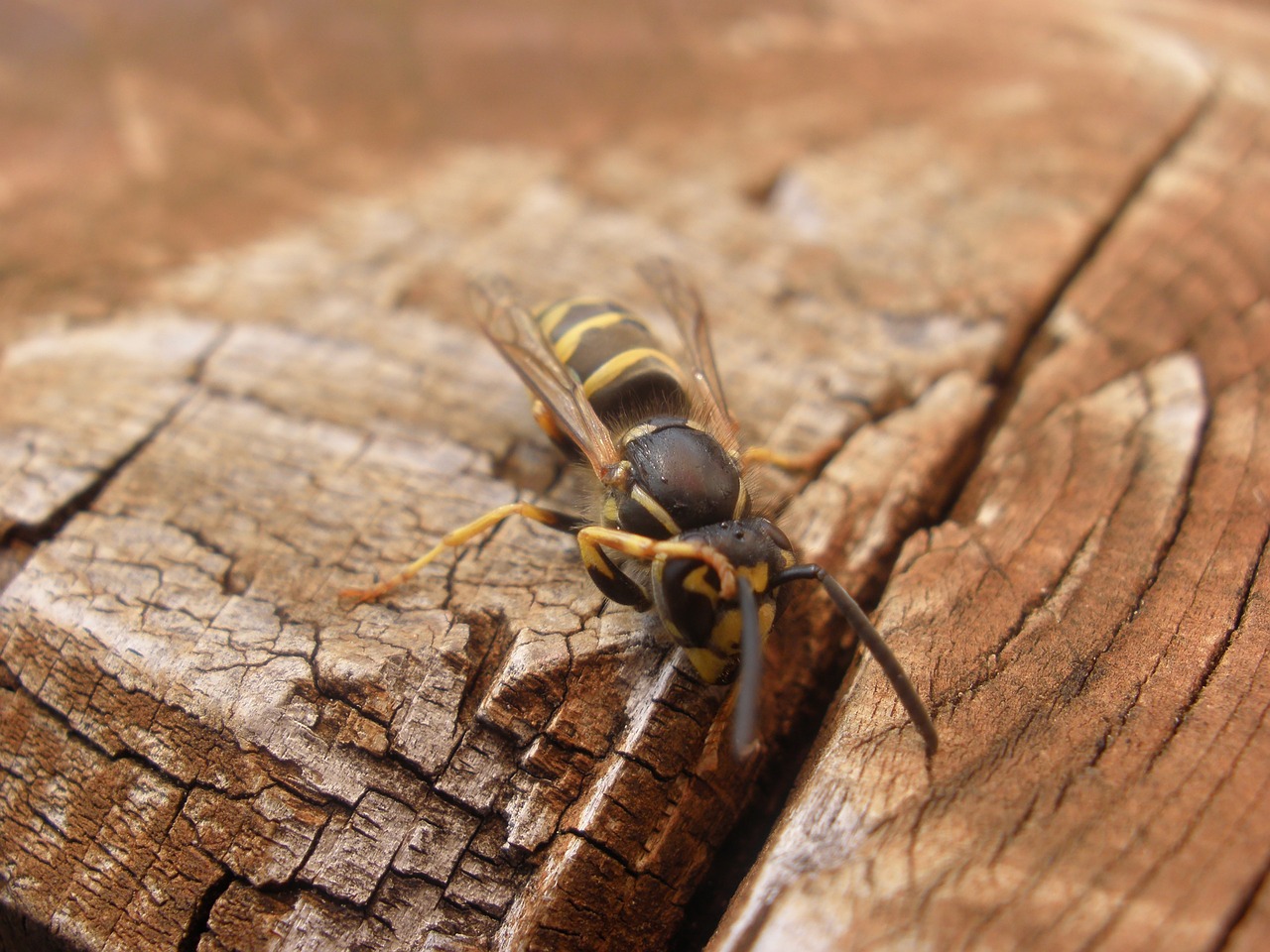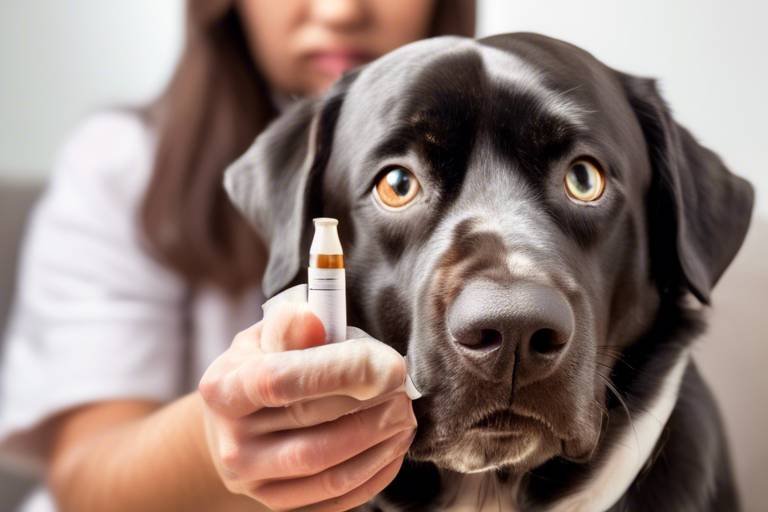How to Keep Your Pet Safe from Seasonal Allergies
As the seasons change, so do the challenges our furry friends face, particularly when it comes to seasonal allergies. Just like humans, pets can suffer from the sneezing, itching, and discomfort that come with pollen, dust, and other allergens. But don’t worry! There are effective strategies to help keep your pet safe and comfortable during this challenging time. In this article, we will delve into the causes and symptoms of seasonal allergies in pets, explore common allergens, and provide you with practical tips to protect your beloved companions.
Seasonal allergies in pets, often referred to as atopy, can be a real nuisance. These allergies occur when pets are exposed to environmental allergens that trigger their immune system. Common symptoms include excessive itching, sneezing, and even gastrointestinal upset. It’s essential to recognize these symptoms early on, as timely intervention can make a world of difference. Think of your pet’s immune system like a security guard; when it misidentifies a harmless substance as a threat, it goes on high alert, leading to those pesky allergy symptoms.
Understanding the common allergens that can impact your pets is crucial for effective management. Here are some of the most prevalent offenders:
- Pollen: Trees, grasses, and weeds release pollen that can trigger allergies.
- Mold: Mold spores thrive in damp conditions and can be a significant allergen.
- Dust Mites: These microscopic creatures love to make their homes in our carpets and bedding.
Each of these allergens can affect your pet's well-being in different ways, leading to discomfort and health issues.
The environment plays a significant role in the prevalence of allergens. Changes in weather patterns can lead to increased pollen counts, while geographical locations can dictate the types of allergens present. For instance, if you live near fields or forests, your pet may be more exposed to plant pollens. It's like living in a neighborhood where everyone has a garden; the more gardens, the more pollen floating around!
Different plants and trees have specific pollen seasons. Understanding these can help you anticipate when your pet might be most affected. For example, tree pollen is usually prevalent in early spring, while grass pollen peaks in late spring to early summer. By keeping track of these seasons, you can take proactive measures to limit your pet's exposure. Consider checking local pollen forecasts, much like you would for your own allergies!
Mold and fungi flourish in damp conditions, making them a significant concern during rainy seasons. If your pet spends time outdoors, be vigilant about moldy areas, such as wet leaves or damp soil. These spores can easily trigger allergic reactions, leading to discomfort for your furry friend. Imagine stepping into a moldy basement; it’s not pleasant, and it’s the same for your pets!
Being able to recognize allergy symptoms in your pets is essential for ensuring their comfort. Common signs include:
- Itching: Persistent scratching or biting at the skin.
- Sneezing: Frequent sneezing or nasal discharge.
- Skin Irritations: Redness, rashes, or hot spots on the skin.
If you notice any of these symptoms, it’s crucial to consult your veterinarian for appropriate treatment options. Early detection can lead to better outcomes for your pet!
As a pet owner, there are several effective strategies you can implement to minimize your pet's exposure to allergens. Here are some suggestions:
Managing indoor allergens is vital for your pet's health. Regular cleaning can significantly reduce dust and dander. Consider using air purifiers to filter out allergens and maintain a clean, pet-friendly environment. Vacuuming carpets and washing bedding frequently can also help keep those pesky allergens at bay. It's like giving your pet a fresh start every day!
When it comes to outdoor activities, timing is everything. Try to limit walks during peak pollen times, typically in the early morning or late afternoon. After outdoor playtime, wipe your pet’s paws and coat to remove any pollen they may have picked up. Think of it as washing off the day’s dirt; it keeps your pet clean and comfortable!
Q: Can seasonal allergies be cured?
A: While there is no cure for seasonal allergies, they can be managed effectively with the right strategies and treatments.
Q: Are certain breeds more prone to allergies?
A: Yes, some breeds are genetically predisposed to allergies. For example, breeds like Bulldogs and Retrievers are known to be more susceptible.
Q: When should I take my pet to the vet for allergies?
A: If your pet shows persistent symptoms or if their condition worsens, it's time to consult your veterinarian.

Understanding Seasonal Allergies in Pets
When the seasons change, many pet owners notice their furry friends sneezing, itching, or experiencing other discomforts. These symptoms can often be attributed to seasonal allergies. Just like humans, pets can suffer from allergies caused by various environmental factors. Understanding the root causes and symptoms of these allergies is crucial for providing the best care for your beloved companions.
Seasonal allergies in pets are primarily triggered by pollen, mold, and dust mites. When pets inhale or come into contact with these allergens, their immune systems may react adversely, leading to a range of uncomfortable symptoms. For instance, you might notice your pet scratching excessively, which can result in skin irritations or even infections if left untreated. Other common symptoms include:
- Sneezing
- Watery eyes
- Runny nose
- Ear infections
Recognizing these symptoms early can make a significant difference in your pet's comfort and health. Just as you would pay attention to your own allergy symptoms, it's essential to be vigilant about your pet's reactions to environmental changes. For example, if you notice your dog sneezing more than usual during spring or fall, it may be time to consult your veterinarian.
Environmental factors play a critical role in the prevalence of seasonal allergies. Changes in weather patterns, such as increased rainfall or warmer temperatures, can lead to a surge in allergen production. Additionally, geographical location can influence the types of allergens present in your area. For instance, if you live near a large number of flowering plants or trees, your pet might be more susceptible to pollen allergies during peak blooming seasons.
Early detection is key. The sooner you identify that your pet is suffering from seasonal allergies, the quicker you can implement strategies to alleviate their discomfort. Regular check-ups with your veterinarian can help monitor your pet's health and detect any allergy-related issues before they escalate.
In summary, understanding seasonal allergies in pets involves recognizing the causes and symptoms, being aware of environmental factors, and prioritizing early intervention. By keeping a close eye on your pet's behavior and seeking veterinary advice when needed, you can help ensure their comfort and well-being throughout the allergy season.

Common Allergens Affecting Pets
When it comes to our furry friends, understanding the common allergens that can affect them is crucial for their health and well-being. Just like humans, pets can suffer from allergies triggered by various environmental factors. These allergens can lead to discomfort and health issues, making it essential for pet owners to be aware of what might be lurking in their surroundings.
One of the primary culprits of seasonal allergies in pets is pollen. During certain times of the year, plants release pollen into the air, which can easily find its way into your pet's fur and respiratory system. Common sources of pollen include:
- Grass
- Trees
- Weeds
Each of these sources has its own specific pollen season, and knowing when these peaks occur can help you manage your pet's exposure more effectively.
Another significant allergen is mold. Mold thrives in damp conditions, and it can be found both indoors and outdoors. If your pet spends time in areas with poor ventilation or high humidity, they may be at risk of mold exposure. Moreover, mold can release spores into the air, which can be inhaled by your pet, leading to respiratory issues or skin irritations.
Then there's the ever-present dust mite. These tiny creatures love to hide in our homes, particularly in bedding, carpets, and upholstery. They thrive in warm, humid environments, and their droppings can trigger allergic reactions in pets. Regular cleaning and vacuuming can help reduce their population, but it might not eliminate them entirely.
To give you a clearer picture, here’s a quick comparison of these common allergens:
| Allergen | Source | Symptoms in Pets |
|---|---|---|
| Pollen | Grass, trees, weeds | Itching, sneezing, watery eyes |
| Mold | Damp areas, decaying organic matter | Respiratory issues, skin irritations |
| Dust Mites | Bedding, carpets, upholstery | Itching, sneezing, coughing |
Being aware of these allergens is the first step in safeguarding your pets. Understanding how they interact with their environment allows you to take proactive measures to minimize exposure. Always keep an eye on your pet for any signs of allergies, and consult your veterinarian if you notice any unusual behaviors or symptoms.
Environmental Factors
When it comes to seasonal allergies in pets, the environment plays a crucial role. Just like humans, our furry friends can react to various elements in their surroundings. Imagine walking through a park filled with blooming flowers; while it may be a delightful experience for you, it could trigger a sneezing fit in your pet. This is because environmental factors, such as weather patterns and geographical locations, can significantly influence the presence and potency of allergens.
For instance, during the spring and fall, pollen levels can skyrocket, especially in areas with abundant vegetation. Certain plants release pollen at different times, contributing to a seasonal cycle of allergens. If you live in an area with a diverse range of flora, it’s essential to be aware of which plants might be causing issues for your pet. Here’s a quick breakdown of common pollen sources:
| Type of Plant | Pollen Season |
|---|---|
| Grasses | Late spring to early summer |
| Weeds (like Ragweed) | Late summer to fall |
| Trees (like Oak and Birch) | Early spring |
Moreover, the weather can either exacerbate or alleviate allergy symptoms. For example, rainy days can wash away some pollen, providing temporary relief. However, once the rain stops and the sun comes out, the humidity can lead to a surge in mold and fungi, which are also common allergens. This cyclical nature of environmental factors means that pet owners must stay vigilant throughout the year.
Additionally, geographical locations can play a significant role in the types of allergens present. Coastal areas might have different allergens compared to inland regions, with factors like air quality and pollution also coming into play. For instance, urban pets might be more exposed to dust mites and pollutants, while rural pets might struggle with pollen from wildflowers and grasses.
Understanding these environmental factors is essential for pet owners. By being aware of the specific allergens that might be present in your area at different times of the year, you can take proactive steps to protect your pets. This might include limiting outdoor activities during high pollen counts or ensuring that your home is a safe haven from indoor allergens.
- What are the signs that my pet has seasonal allergies? Look for symptoms such as itching, sneezing, and watery eyes.
- How can I help my pet during allergy season? Regular grooming, cleaning your home, and consulting your vet for appropriate treatments can help.
- Are certain breeds more prone to allergies? Yes, some breeds are genetically predisposed to allergies.
Pollen Seasons
Understanding is crucial for pet owners who want to keep their furry friends safe from seasonal allergies. Just like humans, pets can suffer from the effects of pollen, which is a common allergen that can trigger discomfort and health issues. Pollen is released from various plants and trees during specific times of the year, and knowing when these seasons occur can help you take proactive measures to protect your pets.
In general, pollen seasons can be categorized based on the type of plants releasing the pollen. Here’s a quick breakdown:
| Type of Pollen | Peak Season |
|---|---|
| Tree Pollen | Early Spring (March to May) |
| Grass Pollen | Late Spring to Early Summer (May to July) |
| Weed Pollen | Late Summer to Fall (August to November) |
As you can see, different types of pollen are prevalent at different times of the year. For instance, tree pollen is most abundant in early spring when trees begin to bloom. Grass pollen follows closely behind, typically peaking in late spring and early summer. Finally, weed pollen takes over in late summer and can linger into fall. By being aware of these patterns, you can anticipate when your pet might be more susceptible to allergies.
During these peak seasons, it’s wise to limit your pet’s outdoor activities, especially on windy days or when pollen counts are particularly high. You can check local weather forecasts or use online pollen trackers to stay updated on pollen levels in your area. If you know that a certain type of pollen is at its peak, consider keeping your pet indoors as much as possible to minimize their exposure.
Additionally, after outdoor walks or playtime, it’s a good idea to wipe down your pet’s paws and fur to remove any pollen that may have clung to them. This simple step can significantly reduce the amount of allergens that they bring into your home, making a big difference in their overall comfort.
By understanding the and taking appropriate precautions, you can help ensure that your pet remains happy and healthy, even during allergy season. Remember, a little knowledge goes a long way in safeguarding your beloved companions!
- What are the signs that my pet has pollen allergies? Look for symptoms like excessive itching, sneezing, watery eyes, or skin irritations.
- Can I give my pet antihistamines? Always consult your veterinarian before administering any medication to ensure it's safe for your pet.
- How can I tell if it's pollen or another allergen affecting my pet? Tracking your pet's symptoms in relation to pollen counts can help identify the trigger.
Mold and Fungi
Mold and fungi are often overlooked culprits when it comes to seasonal allergies in pets, yet they can significantly impact your furry friends' health. These organisms thrive in damp and humid conditions, making them particularly prevalent during the warmer months when humidity levels rise. It's astonishing how something as innocuous as a little moisture can turn into a breeding ground for allergens that can affect your pet’s well-being. Just like us, our pets can suffer from the sneezing, itching, and discomfort that come with exposure to mold spores and fungal elements.
Understanding how mold and fungi work is essential for pet owners. When mold spores become airborne, they can be inhaled by pets, leading to respiratory issues and allergic reactions. Pets may also come into contact with mold when they explore areas like gardens, basements, or anywhere else that has dampness. For instance, if you live in a region with high humidity or frequent rain, mold may flourish in your yard or even inside your home, making it crucial to keep an eye on these areas.
To provide a clearer picture, here’s a simple table outlining the types of mold commonly found in households and their potential effects on pets:
| Mold Type | Common Sources | Potential Effects on Pets |
|---|---|---|
| Aspergillus | Decaying vegetation, stored grains | Respiratory issues, skin irritation |
| Penicillium | Old food, damp walls | Allergic reactions, digestive problems |
| Cladosporium | Soil, decaying organic matter | Itching, sneezing, asthma-like symptoms |
In addition to knowing the types of mold, it’s vital to recognize the signs of mold exposure in pets. If you notice your pet exhibiting symptoms like constant scratching, watery eyes, or a runny nose, it’s time to take action. Just as we might feel uneasy in a moldy environment, our pets can also experience discomfort that can lead to more severe health issues if left unchecked.
To combat mold and fungi, pet owners should take proactive steps. Regular cleaning, especially in areas prone to moisture, can significantly reduce mold growth. Additionally, using dehumidifiers in damp areas and ensuring proper ventilation in your home can help keep mold at bay. Another effective strategy is to regularly inspect your pet’s living environment for signs of mold and address any dampness immediately. Remember, a clean and dry environment is not just beneficial for you; it’s essential for your pet’s health too!
- What are the signs of mold allergy in pets? Symptoms may include sneezing, itching, skin rashes, and respiratory problems.
- How can I prevent mold growth in my home? Keep areas dry, use dehumidifiers, and clean regularly to minimize moisture.
- Is it safe to use mold removers around pets? Always ensure that any cleaning products used are pet-safe and follow instructions carefully.
Recognizing Allergy Symptoms
As a pet owner, it’s crucial to be vigilant and recognize the signs that your furry friend may be suffering from seasonal allergies. Just like us, animals can experience discomfort due to environmental triggers, and understanding these symptoms can make all the difference in their well-being. Allergies in pets can manifest in various ways, and sometimes the signs can be subtle, making it essential to know what to look for.
Common symptoms of allergies in pets include:
- Itching and Scratching: If your pet seems to be scratching more than usual or constantly licking their paws, this could indicate an allergic reaction. You might even notice red, inflamed skin or hot spots where they've been scratching.
- Sneezing and Coughing: Just like humans, pets can sneeze and cough when exposed to allergens. If your pet is sneezing frequently or has a persistent cough, it’s time to investigate further.
- Runny Eyes and Nose: Watery eyes or a runny nose can also be signs of allergies. If you notice your pet’s eyes are red or they have discharge coming from their nose, they might be reacting to seasonal allergens.
- Ear Infections: Allergies can lead to ear infections, which may cause your pet to shake their head, scratch at their ears, or have a foul odor coming from them.
- Changes in Behavior: If your normally playful pet seems lethargic or irritable, it could be due to discomfort from allergies. Pay attention to any changes in their mood or energy levels.
Being aware of these symptoms is the first step toward ensuring your pet’s comfort. If you observe any of these signs, it’s advisable to consult with your veterinarian. They can help determine if allergies are the cause and suggest appropriate treatments. Early detection and intervention can prevent further complications and help your pet feel better sooner.
In addition to recognizing the symptoms, keeping a close eye on your pet’s behavior during peak allergy seasons can be helpful. For instance, if your pet seems to show signs of discomfort during specific months, it could correlate with pollen counts or other environmental factors. Maintaining a journal of your pet’s symptoms and when they occur can provide valuable information for your vet.
Ultimately, the key to managing your pet’s allergies lies in your attentiveness. Just as you wouldn’t ignore signs of illness in yourself or a loved one, it’s equally important to advocate for your pet’s health. By being proactive and observant, you can help your furry companion navigate the challenges of seasonal allergies with greater ease.
Here are some common questions pet owners have regarding seasonal allergies:
- What should I do if I suspect my pet has allergies? - Consult your veterinarian for a proper diagnosis and treatment options.
- Can I give my pet over-the-counter allergy medication? - Always check with your vet before administering any medication to ensure it’s safe for your pet.
- Are certain breeds more prone to allergies? - Yes, some breeds are more susceptible to allergies, so it’s good to research your pet’s breed.
- How can I help my pet during allergy season? - Regular grooming, keeping your home clean, and minimizing outdoor exposure during high pollen counts can help.

Preventative Measures for Pet Owners
As a pet owner, it’s crucial to take proactive steps to protect your furry companions from the discomfort of seasonal allergies. The first line of defense is to create a safe and comfortable environment at home. Regular cleaning is essential; vacuuming frequently and using HEPA filters can significantly reduce dust mites and other indoor allergens. You might think of your home as a sanctuary for your pet, and just like you wouldn’t want to live in a messy space, your pet deserves a clean and allergen-free environment.
Another effective strategy is to establish a grooming routine that includes regular baths and brushing. This not only keeps your pet looking their best but also helps remove allergens that may cling to their fur. Imagine your pet as a sponge soaking up all the pollen and dust from outside; a good wash can help squeeze out those irritants, leaving them feeling fresh and comfortable.
When it comes to outdoor activities, timing is everything. During peak pollen seasons, try to limit your pet's outdoor exposure, especially during early morning and late afternoon when pollen counts are highest. After walks, wipe down your pet’s paws and fur with a damp cloth to remove any pollen they may have picked up. Think of it as a quick shower after a workout; it’s a simple way to wash away the day’s irritants.
Additionally, consider investing in air purifiers for your home. These devices can help filter out airborne allergens, providing a fresher atmosphere for both you and your pet. It's like having a personal assistant dedicated to keeping your air clean! You can also keep windows closed on high pollen days to prevent allergens from drifting inside.
Nutrition plays a vital role in your pet’s overall health, including their ability to fight off allergies. Consult with your veterinarian about dietary options that may help boost your pet's immune system. Certain supplements, like Omega-3 fatty acids, can also promote healthy skin and coat, potentially reducing allergic reactions. Think of it as giving your pet the armor they need to fend off allergens.
In summary, taking preventative measures against seasonal allergies requires a combination of indoor management, outdoor precautions, and nutritional support. By being proactive and attentive to your pet's needs, you can help ensure they remain comfortable and healthy during allergy season.
- What are the signs that my pet has seasonal allergies? Look for symptoms like excessive itching, sneezing, watery eyes, and skin irritations. If you notice any of these, consult your veterinarian.
- Can I use human allergy medications for my pet? No, you should never give your pet human medications without consulting a veterinarian, as some can be harmful.
- How often should I bathe my pet during allergy season? Bathing your pet once a week can help remove allergens, but be sure to use pet-friendly shampoos to avoid skin irritation.
- Are certain breeds more prone to allergies? Yes, some breeds are more susceptible to allergies due to their genetic makeup. Breeds like Bulldogs and Retrievers often experience more allergy issues.
Indoor Allergy Management
When it comes to keeping our furry friends safe from seasonal allergies, managing indoor allergens is a crucial step that every pet owner should prioritize. Just like us, pets can suffer from the sneezes and sniffles caused by allergens lurking in our homes. But worry not! With a few simple strategies, you can create a sanctuary for your pet, free from the irritants that make them uncomfortable. So, let's dive into some effective indoor allergy management techniques that will help ensure your pet remains happy and healthy, even during allergy season.
First and foremost, regular cleaning is your best ally in combating indoor allergens. Dust, pet dander, and pollen can accumulate quickly, especially if you have multiple pets. Aim to vacuum your home at least once a week, using a vacuum cleaner equipped with a HEPA filter, which can trap fine particles that regular vacuums might miss. Don't forget to wash your pet's bedding and toys frequently, as these can harbor allergens as well. It's like giving your pet a fresh start every week!
Next, consider investing in air filtration systems. Air purifiers with HEPA filters can significantly reduce airborne allergens, providing your pet with cleaner air to breathe. Place these in rooms where your pet spends the most time—like the living room or bedroom. Additionally, ensure that your home is well-ventilated. Opening windows on days with low pollen counts can help circulate fresh air, but be mindful of pollen levels on windy days. It's all about timing!
Another effective strategy is to create a pet-friendly environment. This means minimizing clutter where dust and dander can accumulate. Keep your pet's favorite spots clean and free from unnecessary items. Consider using washable rugs instead of carpets, as they can be cleaned more easily, reducing allergen buildup. If you have curtains, opt for ones that can be machine washed instead of heavy drapes that trap dust. Think of it as creating a cozy, allergen-free retreat for your pet!
Finally, be mindful of humidity levels in your home. High humidity can promote mold growth, which is another common allergen. Aim to keep indoor humidity levels between 30% and 50%. You can use dehumidifiers in damp areas like basements or bathrooms to help maintain optimal humidity. This simple adjustment can make a world of difference for your pet's comfort.
In summary, managing indoor allergies for your pet involves a combination of regular cleaning, investing in air filtration, creating a pet-friendly environment, and maintaining appropriate humidity levels. By implementing these strategies, you'll not only reduce allergens but also create a healthier living space for your furry companion. After all, a happy pet means a happy home!
- What are the common symptoms of allergies in pets? Pets may exhibit symptoms such as itching, sneezing, runny nose, or skin irritations.
- How can I tell if my pet has seasonal allergies? Look for changes in behavior, such as increased scratching or paw licking, especially during specific seasons.
- Can I use human allergy medications for my pets? Always consult with your veterinarian before giving your pet any medication, as some human medications can be harmful to animals.
- How often should I clean my pet's bedding? It’s recommended to wash your pet’s bedding at least once a week to minimize allergens.
Outdoor Precautions
When it comes to keeping your furry friends safe from seasonal allergies, are crucial. Just like us, pets can suffer from the irritating effects of pollen and other allergens that float through the air during certain times of the year. Imagine taking a leisurely stroll in the park, only to realize that your pet is sneezing and scratching uncontrollably. To avoid such scenarios, here are some effective strategies to minimize your pet's exposure to allergens while enjoying the great outdoors.
First and foremost, timing is everything. It’s essential to be aware of the pollen count in your area. Many weather apps and websites provide pollen forecasts, which can help you plan your outdoor adventures. For instance, if you know that pollen levels are expected to peak in the afternoon, consider taking your dog for a walk early in the morning or later in the evening when the air is cooler and less polluted with allergens. This simple shift in timing can make a world of difference in your pet's comfort.
Another effective precaution is to bathe your pet after outdoor excursions. After a fun-filled romp in the grass, your pet may have picked up pollen, dust, or even mold spores. A quick wash can help remove these irritants from their fur and skin, providing immediate relief. Use a gentle, hypoallergenic pet shampoo to ensure that you’re not adding to their discomfort. This not only helps in reducing allergens but also keeps your pet smelling fresh!
Moreover, consider investing in a protective pet gear. Just like humans wear masks during allergy season, your pet can benefit from a specially designed doggy coat or a body suit that minimizes exposure to allergens. These garments can act as a barrier, trapping pollen and dirt before it reaches your pet’s skin. If your pet is particularly sensitive, this could be a game-changer to keep them comfortable while still enjoying their time outside.
Finally, always keep an eye on your pet’s behavior during outdoor activities. If they start to show signs of discomfort, such as excessive scratching, sneezing, or watery eyes, it’s a clear signal that it’s time to head back indoors. Trust your instincts; after all, you know your pet better than anyone else. Just like a vigilant parent, being attentive to your pet’s needs will help you catch any allergic reactions early, ensuring their well-being.
In summary, outdoor precautions are vital in protecting your pets from seasonal allergies. By being mindful of the pollen counts, maintaining a regular cleaning routine, and investing in protective gear, you can help your furry friends enjoy the outdoors without the discomfort of allergens. Remember, a little foresight can go a long way in ensuring that your pets remain happy and healthy during allergy season!
- What are the common symptoms of allergies in pets?
Common symptoms include itching, sneezing, watery eyes, and skin irritations. If you notice any of these signs, consult a veterinarian. - How can I tell if my pet has seasonal allergies?
Look for patterns in their symptoms, especially during certain seasons. If symptoms worsen during specific times of the year, it’s likely allergies. - Are there specific breeds more prone to allergies?
Yes, certain breeds, such as Bulldogs and Terriers, are more susceptible to allergies. However, any pet can develop allergies at any age. - Can I give my pet over-the-counter allergy medications?
Always consult your veterinarian before giving any medications to your pet, as some human medications can be harmful to animals. - What can I do if my pet has a severe allergic reaction?
If you suspect a severe allergic reaction, such as difficulty breathing or swelling, seek veterinary care immediately.
Frequently Asked Questions
- What are the common symptoms of seasonal allergies in pets?
Pets suffering from seasonal allergies may exhibit a variety of symptoms. Common signs include excessive itching, sneezing, watery eyes, and skin irritations. You might also notice your furry friend licking their paws more than usual or experiencing ear infections. If you see any of these symptoms, it’s essential to consult your veterinarian for a proper diagnosis.
- How can I identify what my pet is allergic to?
Identifying allergens can be tricky, but keeping a diary of your pet's symptoms and their environment can help. Note when symptoms flare up and what activities your pet was engaged in. Your vet may also recommend allergy testing, which can pinpoint specific allergens affecting your pet, making it easier to manage their exposure.
- What preventative measures can I take to protect my pet from allergens?
There are several effective strategies you can implement to minimize your pet's exposure to allergens. Regular cleaning of your home, including vacuuming and dusting, can significantly reduce indoor allergens. Using air purifiers and keeping windows closed during high pollen seasons can also help. Additionally, consider bathing your pet more frequently to remove any pollen or dust that may cling to their fur.
- Are there specific times of the year when my pet is more likely to suffer from allergies?
Yes, pets are often more susceptible to allergies during specific seasons, particularly spring and fall when pollen counts are high. Different plants and trees release pollen at various times, so being aware of these seasons can help you manage your pet’s exposure. For instance, grasses typically pollinate in late spring, while ragweed is prevalent in the fall.
- Can indoor allergens affect my pet, and how can I manage them?
Absolutely! Indoor allergens like dust mites, mold, and pet dander can significantly impact your pet’s health. To manage indoor allergens, maintain a clean environment by regularly washing pet bedding, using hypoallergenic cleaning supplies, and investing in a quality air filter. Keeping your home dry and well-ventilated will also help reduce mold growth.
- What should I do if my pet has a severe allergic reaction?
If you suspect your pet is having a severe allergic reaction, such as difficulty breathing, swelling, or excessive vomiting, seek veterinary assistance immediately. These symptoms can indicate a potentially life-threatening situation, and quick intervention is crucial. Always have your vet's contact information handy for emergencies.



















